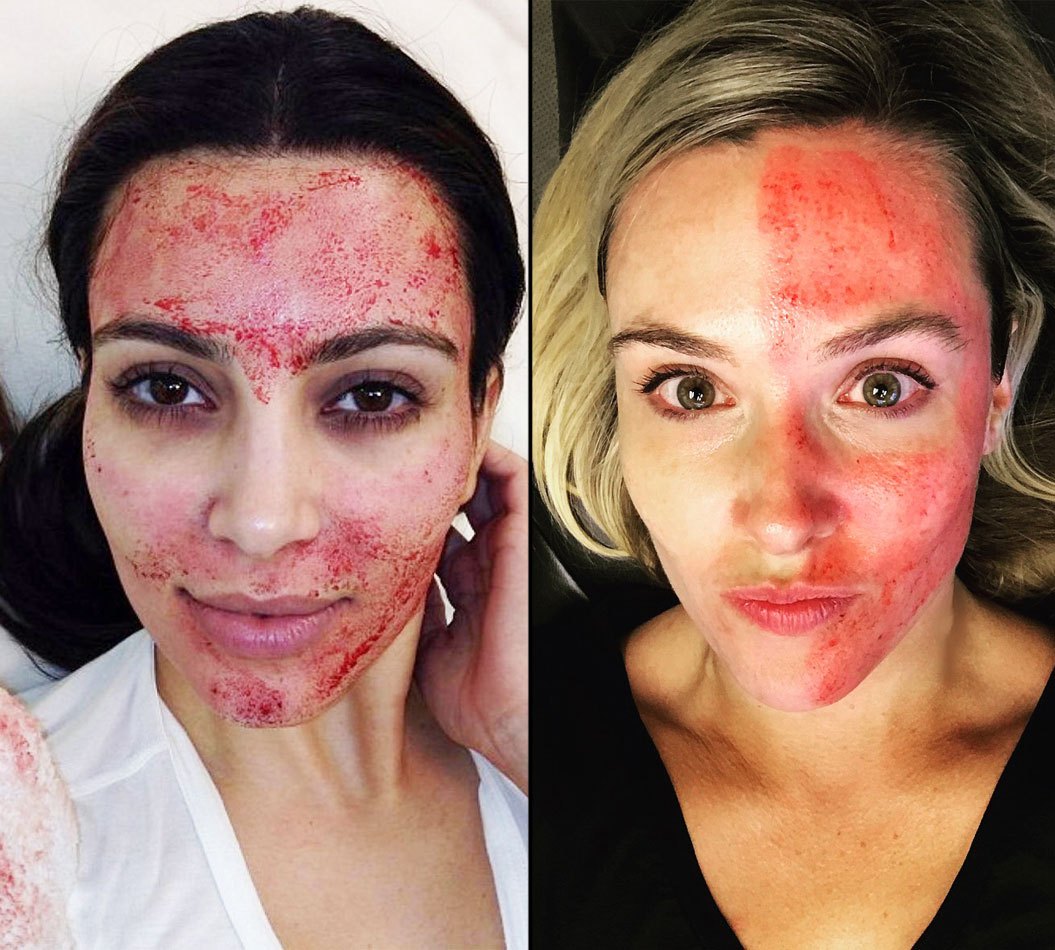What is a “vampire facial”, platelet-rich plasma (PRP)?
 Vampire Facial AKA PRP
Vampire Facial AKA PRP
“Vampire facial“, or platelet-rich plasma (PRP)*, is 3-step procedure that involves having your blood:
- Drawn from your arm
- Placed into a machine that separates the platelets from the rest of your blood
- Re-injected into you (only the part of your blood that contains a high concentration of platelets).
PRP is an unproven treatment. There’s little evidence to show that it works — or doesn’t work. After a vampire facial some patients see less sagging, fewer wrinkles, and say it gets rid of deep creases, diminishes acne scars and improves their complexion. A procedure takes about 45 minutes to one hour. There can be a bit of pain, bruising, and swelling afterwards. These tend to go away within a few days. There’s little to no downtime. If you get results, the full effects appear within a few weeks to months. Price can range from $250 to $1,500 per treatment.
How many PRP injections do you need?
Researchers have found that most patients who get results have 3 or more treatments. That means, you’d have to go to your dermatologist’s office 3 or more times to have blood drawn, treated, and injected back into you. So that patients can see immediate results some dermatologists inject a filler along with PRP.
Who can have PRP rejuvenation?
While PRP is considered safe for most people, it’s not recommended for anyone who has one of the following medical conditions:
- Hepatitis C
- HIV or AIDS
- Any type of blood cancer
- Cardiovascular disease, which requires taking a blood thinner
- Skin cancer in the area to be treated
Is PRP safe?
While dermatologists still have many unanswered questions, the procedure itself appears safe. The biggest risks comes from the way your blood is handled. It’s essential that the blood removed from your body be kept sterile. Otherwise, you could develop an infection.
For your safety, the facility should also follow the same process that transfusion centers use to make sure that your own blood is injected back into you. If you receive someone else’s blood by mistake, you could become very sick.
Is PRP right for you?
If you’re thinking about trying PRP, see a board-certified dermatologist. These doctors perform more cosmetic procedures than any other type of medical doctor. They have the in-depth training required to evaluate your skin and tell you what proven treatments can be most effective for you.
PRP is being tested as a possible treatment for hair loss. A few dermatologists are using PRP to give patients younger-looking skin. PRP may also speed up wound healing. Orthopedic surgeons use PRP to help athletes recover more quickly after an injury.
* Information from The American Acadeny of Dermatology
